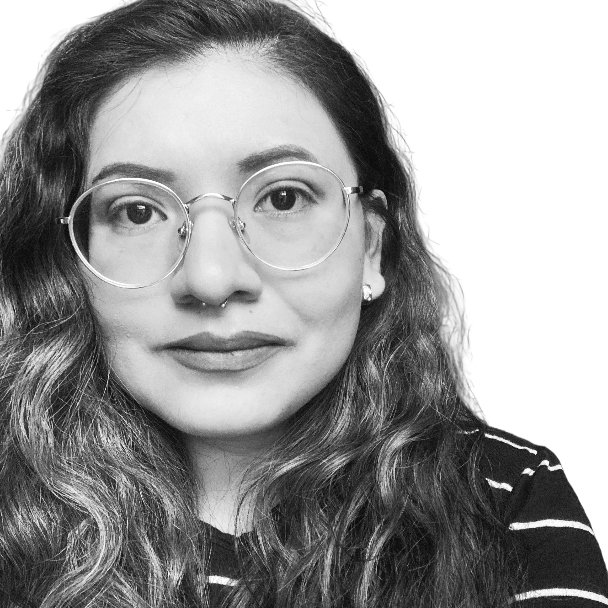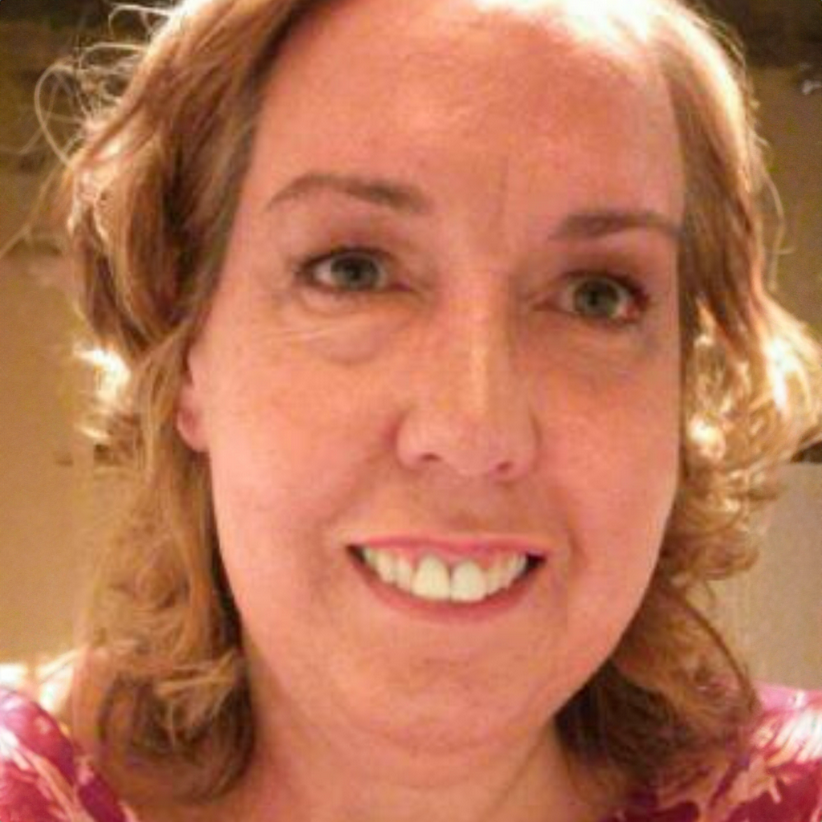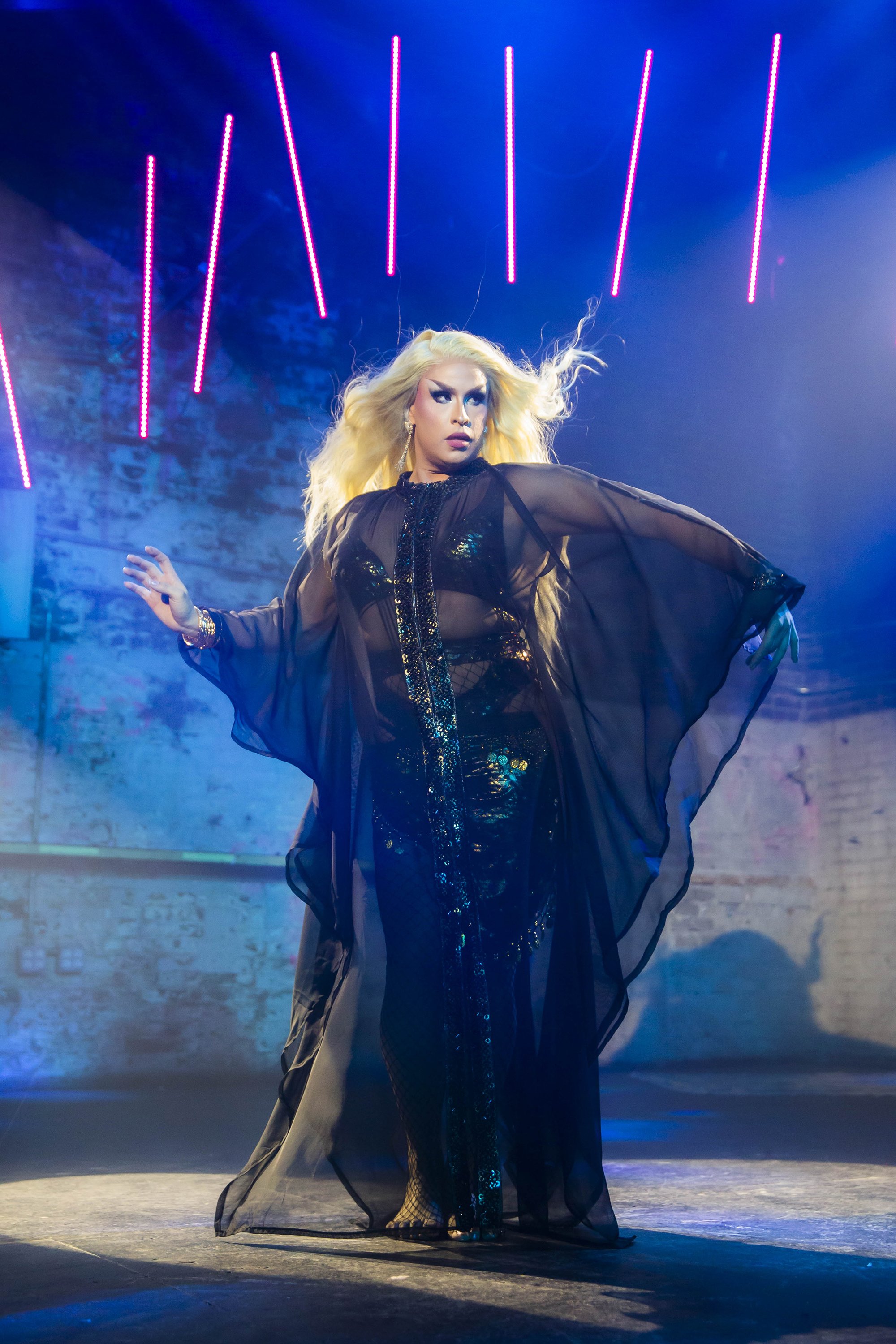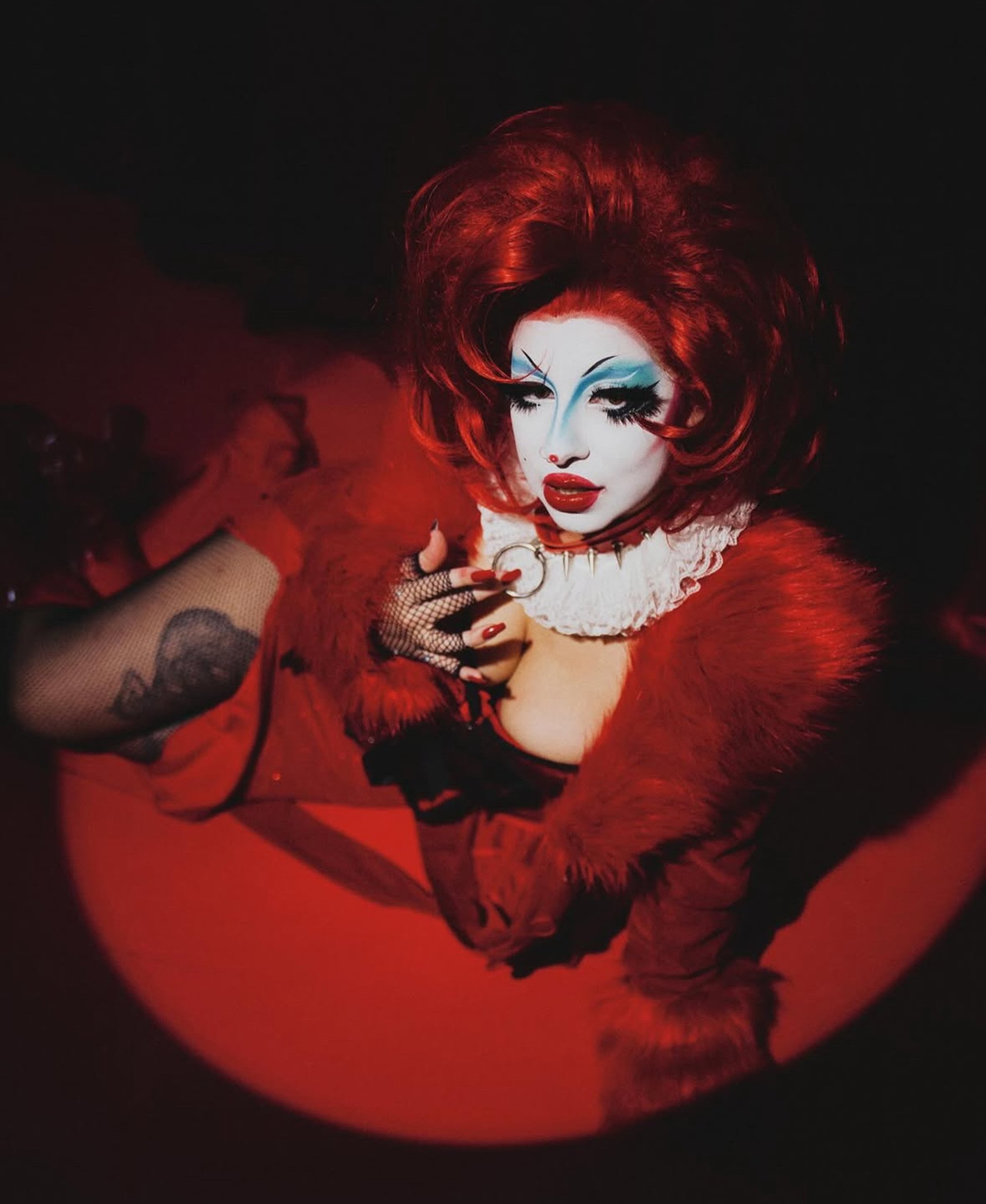Glitter in the Resistance: Latinx Drag Queens Light Up the Dark
Eric Dorsa on stage during "Reinas" night at the bar Hush in Manhattan, where Latinx drag artists celebrate Latin culture through performance. Photo by Danny Aros for palabra
With every hip roll and lip-sync, these artists defy bans, borders, and binaries.
A rainbow flag is perched high above the entrance of the club 3 Dollar Bill in Brooklyn, N.Y. Two doors across the bar lead into a larger room, where a stage is located at the back and center. The sound of people talking is barely audible over the DJ’s remixes of Bad Bunny and Karol G.
Petite drag performer Freeda Kulo jumps onto the stage in a form-fitting black sequinned and chiffon bedlah, a matching bra and belt used in belly dancing. The show in March was a tribute to Shakira, and the crowd joined in to sing the lyrics. It was a joyous night for the Latinx queer community.
The origin of Latinx in drag in NYC traces back to La Escuelita, a 1970s queer nightclub in Manhattan, and House of Xtravaganza, a 1980s primarily Latinx ballroom where artists of color gathered to share their work. The sounds of merengue, salsa, and hip-hop could be heard inside. Today’s new generation of creatives is contributing to the ever-evolving history of the art form.
Freeda, Catrina Lovelace, Pixie Aventura, and Eric Dorsa are performers of first- and second-generation immigrant backgrounds. They were raised in Spanish-speaking households with the values and traditions of their home countries. Drag helped them bridge the gaps between their Latin American immigrant and queer roots. They incorporate their life experiences into their work and carry that onto the stage to share with audiences everywhere.
Eric Dorsa prepares backstage before performing on "Reinas" night. Photo by Danny Aros for palabra
At the same time, a total of 588 anti-LGBTQ+ bills, 914 anti-trans bills, and 17 drag ban bills have been proposed so far this year. Proposed legislation could classify drag shows as adult content, prohibit shows from being held in public spaces, criminalize drag performances, and prevent minors from watching the art form live. A self-defense handbook for drag artists by Qommittee is available online. It explains First Amendment protections, lists mental health resources, and provides other practical advice for online and offline safety. The Trump administration’s restrictions on immigration are threatening the well-being and safety of communities. This is a tough time for people who are at the intersection of underrepresented identities.
“Now more than ever it seems like there's so much actively working against us as queer people, Latinos, and immigrants. We still have a right to take up space and to honor who we are and to celebrate our culture. That’s not something that they can take away from us,” Eric, a Chicana mental health activist and a queen from Texas, tells palabra.
Eric Dorsa gets ready backstage with fellow drag performers before taking the stage. Photo by Danny Aros for palabra
Eric Dorsa displays a tattoo of Mexican icon Frida Kahlo. Photo by Danny Aros for palabra
How Drag Artists Incorporate their Latinx Roots into their Work
Freeda spent the majority of her childhood in Mexico and moved to California at 16. She explains the meaning of her stage name. “I've always been immensely inspired by Frida Kahlo, not just her artwork, but her story and the accounts behind some of the pieces.”
In 2019, Freeda was bedridden in a basement studio for three months to heal from a torn meniscus injury and was motivated by Kahlo’s story about painting in bed to recuperate from an accident. That made Freeda decide to work on her drag skills while recovering at home. “Rather than taking it as a hindrance, I found the silver lining,” she says. “I thought maybe this is a moment for me to slow down. I practiced makeup, styling, and how to make mixes. It was more of an incubator for me to foster my skills.”
One year later, with a back brace still on, Freeda went to a queer bar in Queens that hosts Latinx nights and asked the staff to give her a chance to perform live. For her first number, she lip-synced to Juan Gabriel in a mariachi-inspired outfit. The manager told her there was a line outside waiting to hear her perform, and Freeda was elated by the amount of tips she earned that night.
She says her background as an immigrant influences her art. Not quite feeling a sense of belonging to either country, she connects more with her Mexican upbringing. “Sometimes you're not enough to be from there, and you're not enough to be from here. Before, it was something no one wanted to talk about because there was shame,” she says. Being a first-generation Mexican American allows me to embrace that and to acknowledge that my latinidad is valid.”
Catrina also blends her cultural roots into her stage persona. Her name references a traditional skeleton costume worn for Día de Muertos. She is Mexican American and was born and raised in NYC. She says that as a teen, she was reluctant to embrace her heritage outside of home and was worried that others would not understand or accept her.
Catrina says that just five years ago, she had an epiphany when she made a conscious decision to embrace the profound significance that latinidad plays in her life. “When I grew up and I got older, I was like, I definitely need to always have my Mexican culture in the forefront.”
Catrina was the winner of the 2023 Miss Big Adam’s Apple show. It is a contest in which drag queens compete to be the funniest, and then contestants can go on to perform at the annual National Comedy Queen Pageant. She played the character El Chapulín Colorado from Chespirito, which was a popular Mexican television comedy series that parodied superheroes. Catrina wore the Chapulín’s spandex suit with mustard yellow short shorts and pom pom antenna ears.
In the past, Catrina says she would have been overly concerned about whether the judges would understand the reference. This time, she showed them one of her favorite sitcoms with ease.
Queer Representation In Latinx Media is Lacking
Pixie didn’t label herself as Latinx when she started performing because she didn’t want her drag character to be limited to a single identity. She is a Cuban-Nicaraguan queen from Florida. “I'm inspired by all types of material. Sometimes it goes with my Latinx roots, and sometimes it doesn’t even correlate. I've always wanted to have the openness of being creative and not being pigeonholed as the Latinx queen,” she shares. Her artistic influences include Bugs Bunny, Lucille Ball, Robin Williams, and Mariah Carey.
After Pixie moved to NYC, she became known as a Latinx queen in Lower Manhattan. It was not a role she expected to play but once she noticed she was positively contributing to queer visibility she embraced it. “Eventually I realized without even trying that I became the representation for queer people that I didn't see growing up. Queerness is not really represented in Latinx media. You probably can name a handful. This is why I've kept doing drag.”
The telenovelas that Pixie and other LGBTQ+ millennials grew up watching included one minor side character that was subtly coded as queer. The sexuality of the character was implied and not directly addressed or revealed in the show. Pixie adds, “It was always looked down upon, right? In Latinx media, it needs to be more positively seen.”
Pixie Aventura performing at celebrities Frankie James Grande and Hale Grande’s wedding reception. Photo courtesy of Pixie Aventura
LGBTQ+ Prejudice in Latin America Prevails
Pixie, Freeda, Eric, and Catrina may have been raised and live in the United States, but drag performers still have to deal with prejudice and biases in Latinx communities that stem from the cultural values of their home countries.
Support the voices of independent journalists.
|
According to a 2024 report by the Friedrich Naumann Foundation, about 33 million Latinx identify as LGBTQ+. Despite the significant progress made in passing legislation for the rights and protections of queer people in Latin America, there is still much discrimination. In 2023 in Latin America overall there was a 5.5% rise in the murders of queer people compared to the previous year according to a report by Red Sin Violencia.
“In Latinx culture, drag artists are still met with a lot of stigma in real life outside of the artistic realms in which we operate,” says Eric.
These drag artists have roots in Mexico, Cuba, and Nicaragua. In the first two countries, gay marriage and civil unions are legal, while in the third, it is banned; Nicaragua ranks low in the equality index for Latin American countries. Last year, the number of hate crimes in Mexico peaked at 148 known incidents. The majority of the victims were women and trans people - the number may be inaccurate as many cases go unreported in the media.
Eric Dorsa, left, performs with fellow drag artists Pietra Parker, center, and DD Fuego during "Reinas" night at Hush in Manhattan. Photo by Danny Aros for palabra
Eric Dorsa performing during "Reinas" night. Photo by Danny Aros for palabra
Gender Inclusivity
Popular television shows portray drag as an art form exclusively done by cis gay men. Etta Puss thinks that it does not accurately reflect the rich variety of gender in real-life shows, but it's getting better and moving in that direction as mainstream media sees how audiences respond to the content. More trans people have been featured lately. Puss is an afab (assigned female at birth), and a femme-presenting drag creator who has felt accepted in all public spaces.
“When people think of a drag queen, they think of a cis gay man, but that's not the reality when you're actually out at drag shows. Most performers I know are trans or at least nonbinary. Then there are plenty of cisgender women like myself,” says Puss.
Drag gives artists from all backgrounds and sexualities the space to define their individualized gender. Performers can play with it by experimenting with various identities and poke fun at traditional gender roles.
Eric has been doing drag for over 12 years. When they started they saw trans women and gay men perform as drag queens and queer women perform as drag kings. Now, people of any gender play characters of any other gender. “There was not this understanding of gender that we have a day of gender fluidity or nonbinary people,” they say.
Performers in NYC share that they have not been treated differently due to their preferred gender identity, presentation, or pronouns. The scene provides creators who have not been traditionally represented in mainstream media with safe and supportive environments where they can find community and flourish as artists.
Eric Dorsa backstage at Hush, a gay bar in Manhattan. Photo by Danny Aros for palabra
How a Show Promoter Helps Support POC and Immigrant Artists
The annual Miss Big Adam’s Apple comedy competition is a show that focuses on including artists from marginalized backgrounds, such as drag kings, afab creators, and immigrants. The winner receives a $500 cash prize and a chance to participate in the national event.
For the first time, it included two afab queens, Koko Momo and Lori Lu, a Mexican immigrant artist.
“The best way to support drag queens of color is to make sure they feel that the competition welcomes their perspective. It's important to be aware of potential biases and to actively work to challenge them, especially when in a position of power,” says Kari Kerring, 2023 Comedy Queen Performer of the Year. “I want to make sure, as a promoter, I am doing that.” She and her co-promoters are constantly working towards reaching that goal by seeking out a wide range of possible contestants.
Drag performer Lori Lu receives her Miss Big Adam's Apple comedy competition award on stage. Photo by Leyda Luz/courtesy of Lori Lu
What’s Next for Latinx Drag Performers
When Pixie started performing in 2010, she was one of just a handful of Latinx drag artists in Manhattan. The visibility of the community in live shows and in drag media has grown alongside Latinx presence in American popular culture. She, Catrina, Eric, and Freeda agree that there can be even more representation on stage. They suggest that show producers and organizers should take a chance on new artists to increase the representation of Latinx and people of color in their shows.
She says, “Anyone can perform Lady Gaga and Beyoncé, but people want to see themselves. I want to see people perform Gloria Trevi, Paquita, and Los Bukis. I feel like people are hungry for it, too. The beauty of being Latinx is that there’s so much diversity. People need to understand that they can't generalize Latinx people.”
Eric Dorsa, left, performs with a fellow drag artist during "Reinas" night at the bar Hush in Manhattan. Photo by Danny Aros for palabra
—
Yesica Balderrama is a bilingual journalist and producer based in NYC. She emigrated from Morelos, Mexico, at the age of five and is a proud DACA recipient. Her work has been published in The Associated Press, Los Angeles Times en Español, PRISM Reports, Yes! Magazine, and Guernica, among others. She has also done production work for WNYC’s The Brian Lehrer Show, Slate’s Culture Gabfest Podcast, and NPR’s Latino USA. When she is not working, she can be found at a music show, bookstore, or museum. @yesica_bald
Danny Aros (Colombian American, he/she/them) is a gender non-conforming artist of Andean and Amazonian descent. Danny was born in Bogotá and grew up in Tampa, Florida, where their family immigrated seeking political refuge. While attending college, Danny began assisting celebrity photographer Mike Ruiz., and later became a producer for a boutique photo agency, working with luxury fashion brands and publications. After being awarded the EnFoco Fellowship in 2022, Danny began to build his career as an artist in residency at the Bronx River Arts Center in New York CIty. Working among different cities but based out of NYC, Danny has been exploring methods of presenting their photography work away from the traditional frame. @senoraros
Patricia Guadalupe, raised in Puerto Rico, is a bilingual multimedia journalist based in Washington, D.C., and is the interim managing editor of palabra. She has been covering the capital for both English- and Spanish-language media outlets since the mid-1990s and previously worked as a reporter in New York City. She’s been an editor at Hispanic Link News Service, a reporter at WTOP Radio (CBS Washington affiliate), a contributing reporter for CBS Radio network, and has written for NBC News.com and Latino Magazine, among others. She is a graduate of Michigan State University and has a Master’s degree from the Graduate School of Political Management at George Washington University. She is the former president of the Washington, D.C., chapter of NAHJ and is an adjunct professor at American University in the nation’s capital and the Washington semester program of Florida International University. @PatriciagDC



















